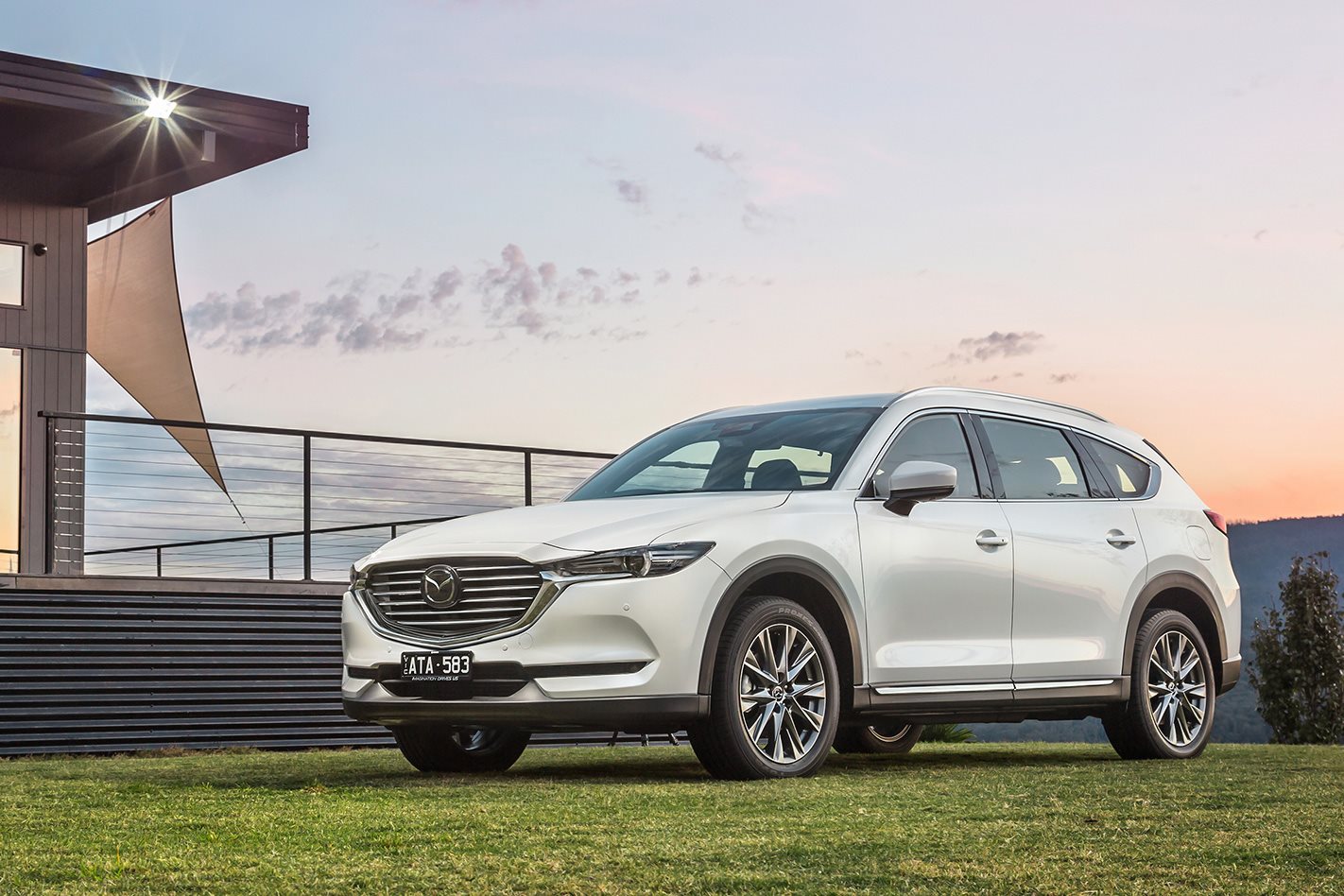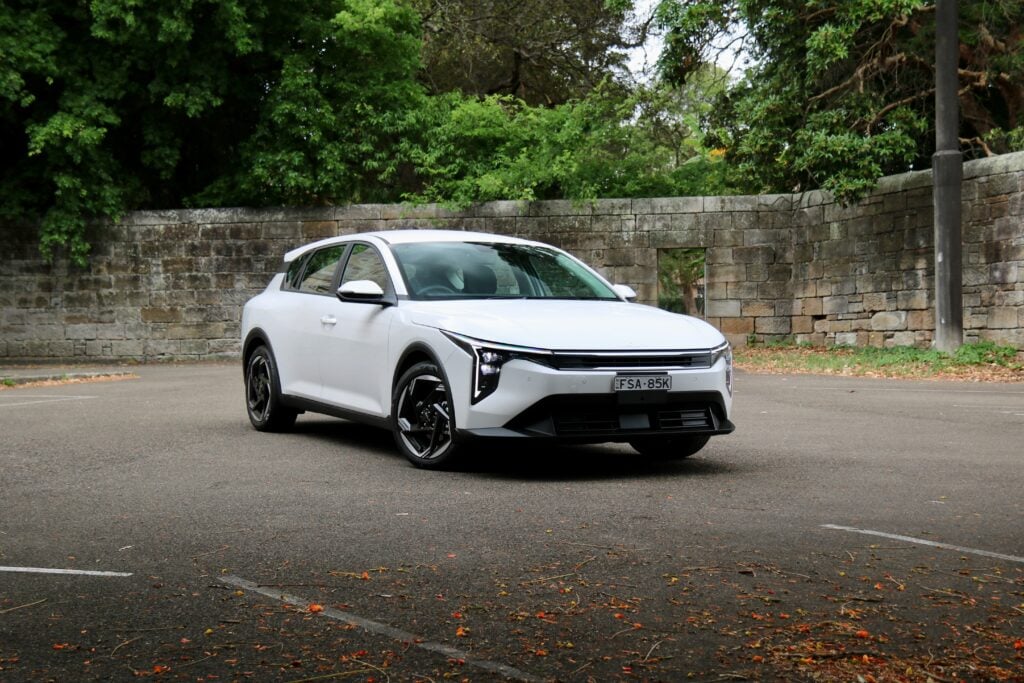WHAT IS IT?
Mazda’s seven-seat, diesel-only SUV that slots above the five-seater CX-5, but is a little more compact and less expensive that the flagship (and also seven-seater) CX-9.
WHY WE’RE TESTING IT
The Australian media launch in Queensland gave us our first chance to try the CX-8 on local roads. It will soon face off against the Peugeot 5008 and Skoda Kodiaq in a three-SUV comparison to appear in the August issue of Wheels.
MAIN RIVALS
Nissan X Trail, Peugeot 5008, VW Tiguan Allspace, Skoda Kodiaq
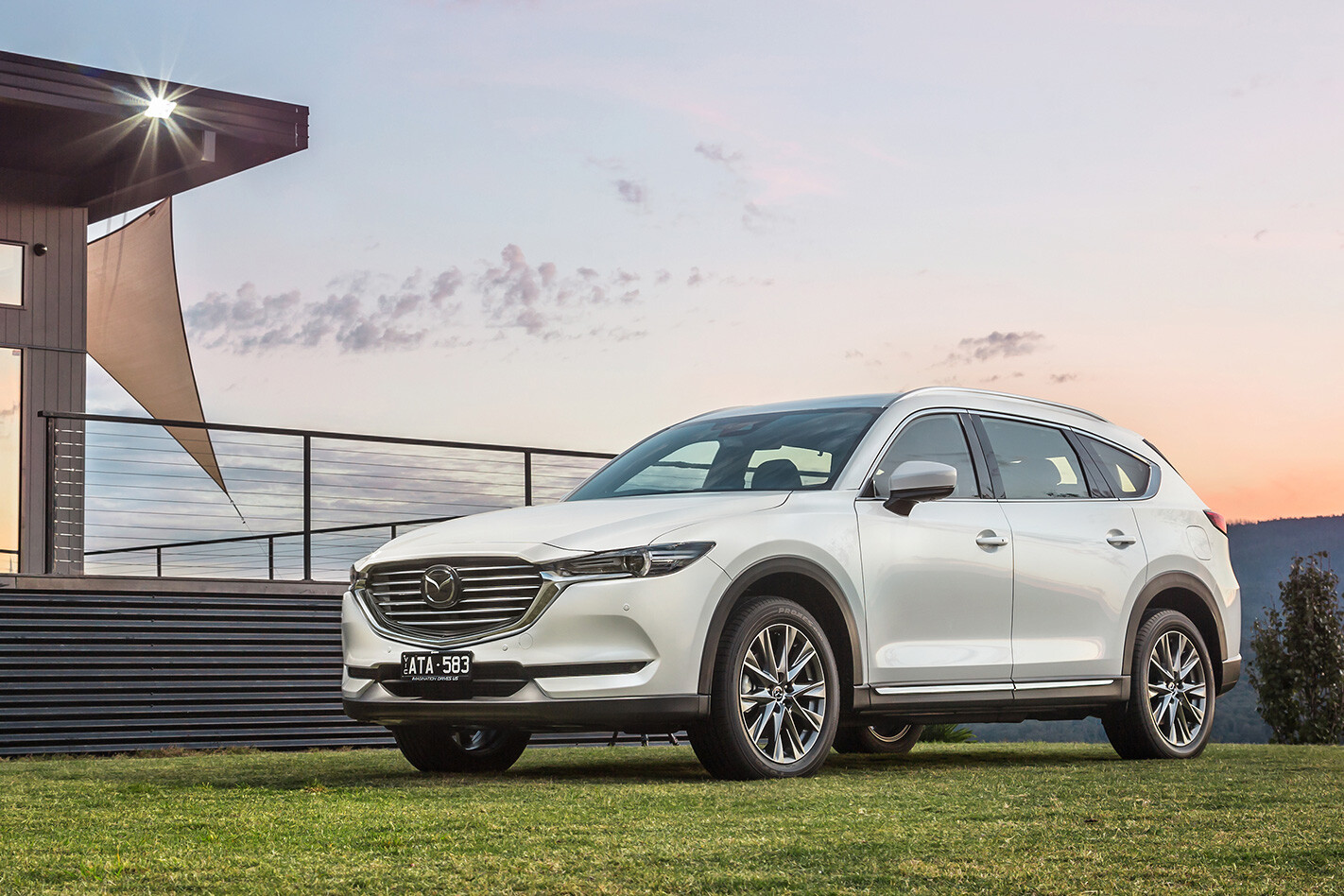
THE WHEELS VERDICT
Mazda’s CX-8 drives more like a heavier, slighter softer-riding CX-5, rather than a more wieldy CX-9. The lack of a petrol engine may temper its appeal for some buyers, and the top-spec Asaki demands a hefty $15,000 premium over the all-wheel-drive Sport model. But the upgraded 2.2-litre diesel is strong and frugal, and the seven-seater functionality, equipment levels and elegant cabin presentation will be enough to seal the deal for plenty of families for whom the CX-9 is just a bit too bulky.
PLUS: Overall comfort and cabin quietness; good diesel refinement and economy; intelligent packaging and seating versatility MINUS: No petrol engine option; lack of (for now) Apple CarPlay and Android Auto; no paddle shifters on Sport; no air vents in third row
THE WHEELS REVIEW
WELCOME to the best Mazda seven-seater SUV never intended for Australia. To fully understand the CX-8, you first need to grasp its intended positioning from a global perspective – which is actually not global at all. This is a model designed and built for the Japanese market, aimed at customers who want the versatility of seven seats, but are part of the crowd abandoning MPVs in their droves. Mazda doesn’t offer the 2017 COTY-winning CX-9 large SUV in Japan, so the CX-8 was essential to provide a seven-seater for the home market.
The Japanese take-up of diesels in the SUV segment remains strong, hence the reason the CX-8 is built only with Mazda’s recently updated 2.2-litre twin-turbo four.
All of which explains why Mazda Australia saw fit to make the CX-8 the fourth member of its SUV line-up. The CX-5’s five-seater-only packaging limits its appeal for expanding families, while the large CX-9 does seat seven, it’s a petrol-only proposition. The CX-8, so the reasoning goes, slips in to provide a slightly shorter, narrower, oil-burner alternative.
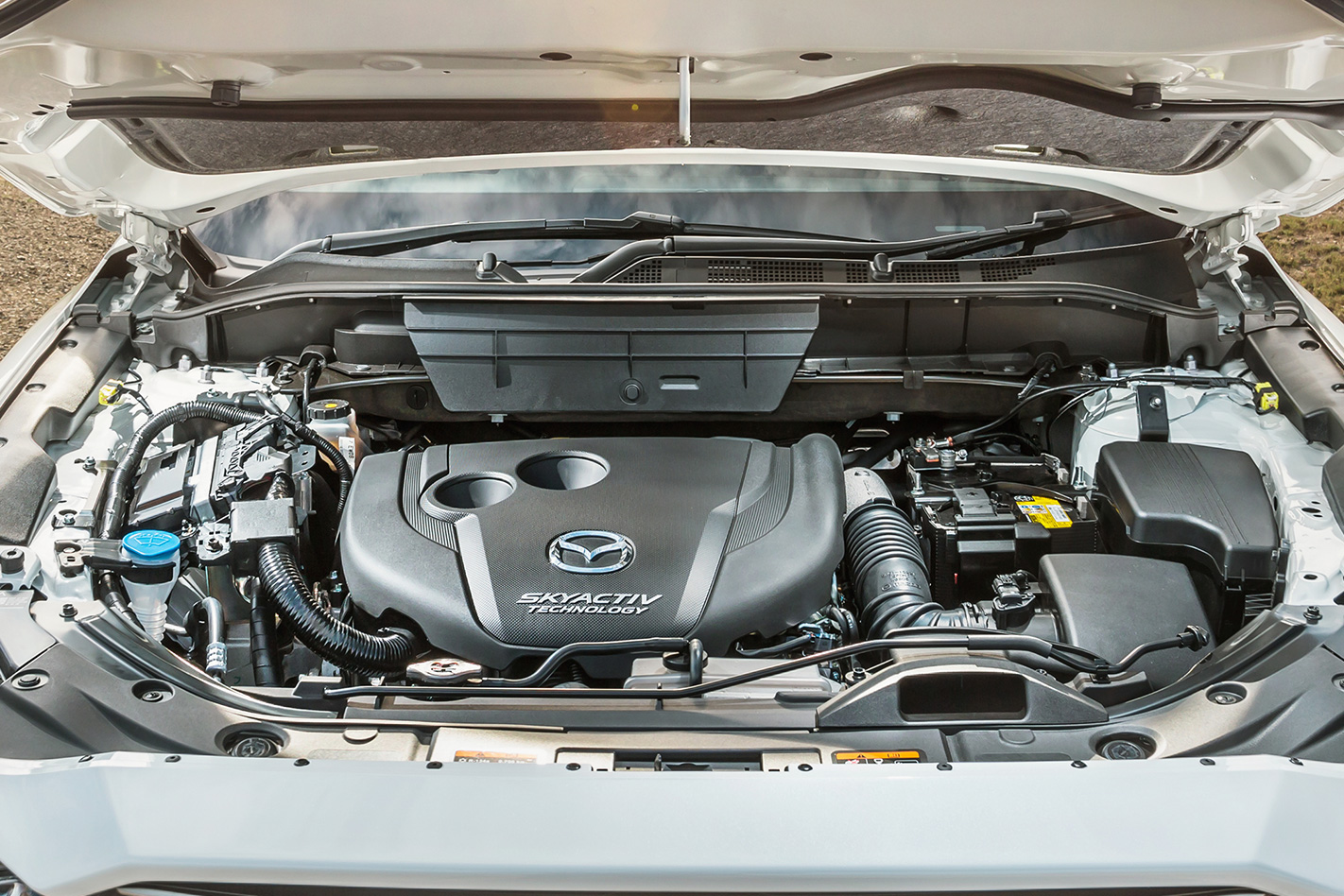
Mazda claims the CX-8 is based largely on the CX-9, but the reality is a little more complex. Its wheelbase of 2930mm is shared with the large SUV, and the fundamental suspension hardware is CX-9-derived. Revisions to rebound springs and the addition of what are termed dynamic dampers to the front struts are intended to both sharpen dynamics and improve NVH. But plenty of other key components come courtesy of CX-5, and the CX-8’s body width of 1840mm is also shared with the smaller SUV. Front and rear track widths are separated by only a few millimetres compared with CX-5, while inside, forward of the B-pillar is virtually all CX-5.
Models are contained to just three, in two equipment grades: Sport and Asaki. Sport can be had as a base front-driver for $42,490 (expected to take around 60 percent of sales in the first year) or as an all-wheel drive for an extra $4000. The (mandatory AWD) Asaki adds to an already fairly generous spec level, but takes the price deep into CX-9 territory at $61,490 – a figure that comes very close to securing the second-from-top-spec AWD GT model. The $15,000 hike from AWD Sport to top-spec Asaki does bring Nappa leather, heated steering wheel, heated and electric seats up front, heating for the second-row outer seats, adaptive LED headlights, and premium Bose audio, among other fruit. But still, it’s a hefty leap, and goes some way to explaining why Mazda Australia only expects one in every five CX-8s to be an Asaki.
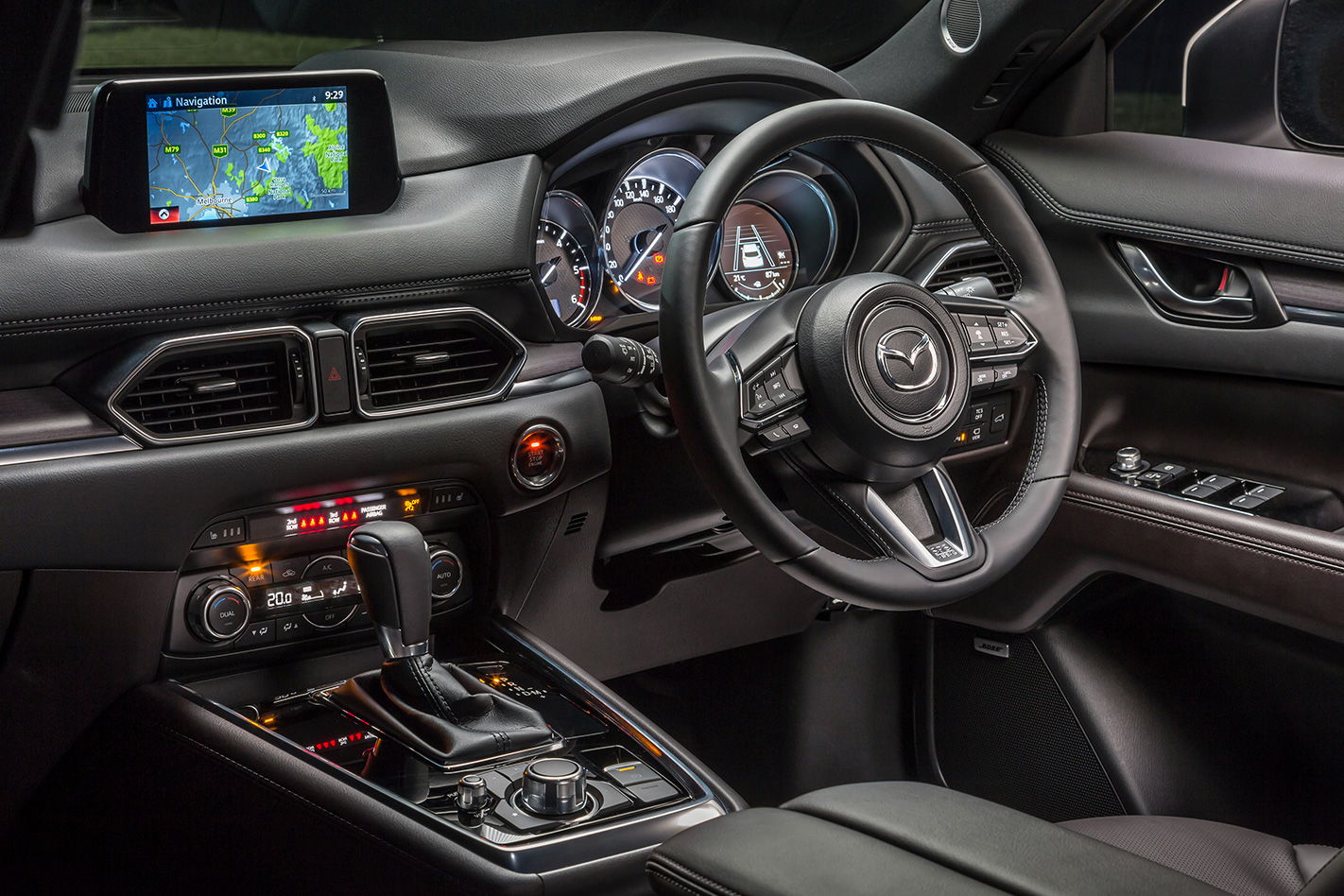
So how does it drive? Let’s just say back-to-back testing with both a CX-5 and a CX-9 would prove very instructive. We didn’t have that opportunity at the car’s Queensland launch, but our impressions are that this is closer to a heavier, more compliant-riding CX-5 than it is a more compact and nimble iteration of the CX-9. In AWD spec, the CX-8 weighs in at 1957kg, some 200kg heavier than an equivalent CX-5, so don’t expect mid-size SUV levels of agility. The steering feels nicely weighted and responsive around town, and the 3.1 turns lock-to-lock helps with the general impression of wieldiness. Increase the pace to country cruising, though, and the steering reveals a slight on-centre vacancy, and the front end prefers a more measured approach that allows the weight of the nose to settle before probing the limits of tyre adhesion.
Overall, the body control and general dynamics are good, but arguably more noteworthy is the ride comfort and quietness in the cabin. After copping criticism in the past for less-than-hushed on-road manners, Mazda has declared war on NVH, and the CX-8 benefits from that campaign. There is extra soundproofing applied to the inner of the rear guards and at the base of the D-pillar to make things more quiet in the third row, and better sealing of the tailgate to help cut wind noise.
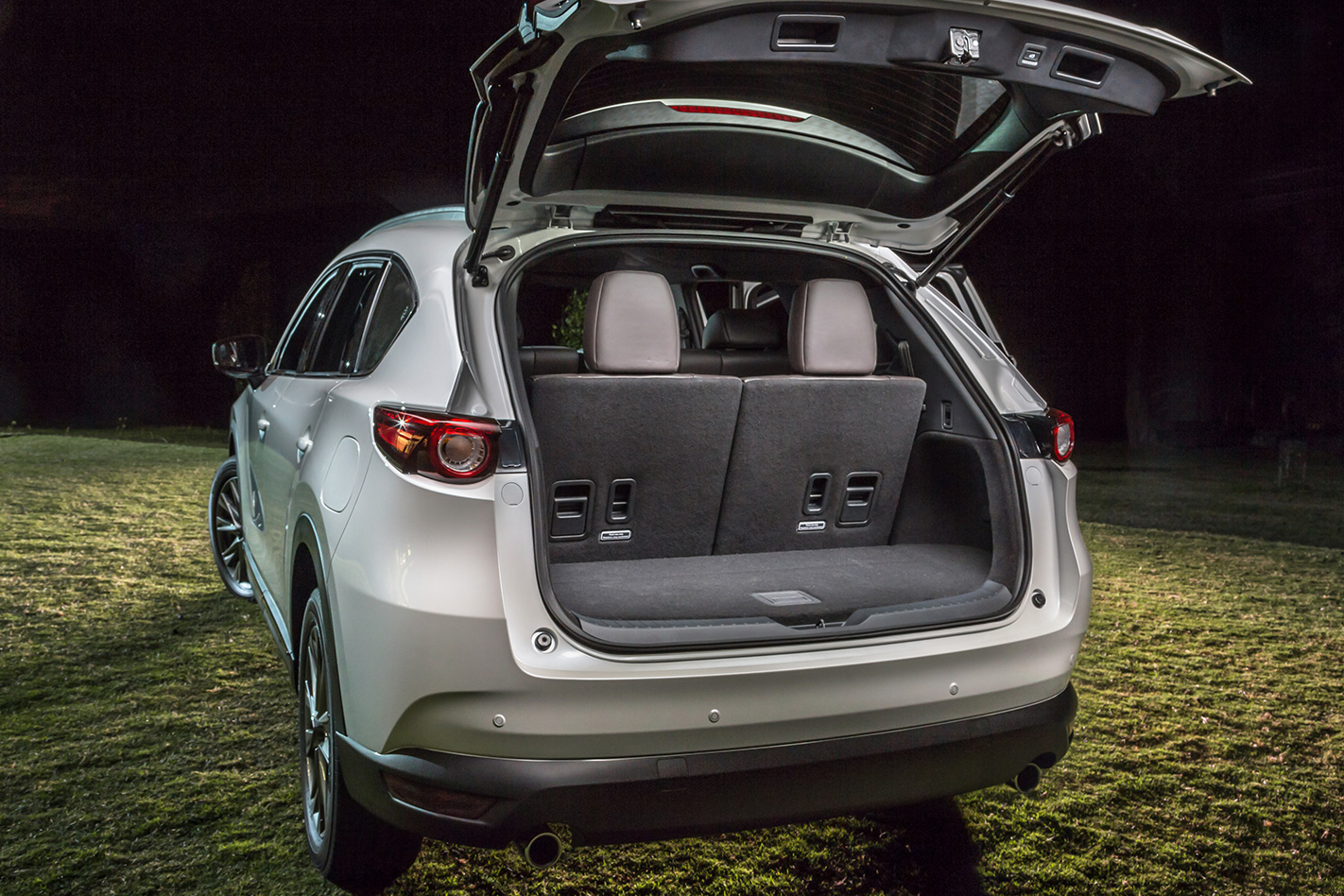
That’s just the start of it, and it all comes together to make this a really nicely muted and polished-feeling family car. Even the road noise on the 19-inch tyres of the Asaki is not appreciably louder than that from the same-width (225mm) but higher profile 17s on the Sport, and nor is there any stark degradation in ride quality between the two. The CX-8 mostly just cruises along with ample compliance and a general imperviousness to road surface that would make some higher-priced Euro SUVs look stiff-legged and restless by comparison. It’s not flawless – we did experience crash-through on a couple of occasions over ruts that didn’t outwardly look all that evil, but mostly the ride-handling balance feels sensibly calibrated towards keeping occupants comfortable and relaxed, rather than trying ramp up the zoom-zoom factor unnecessarily.
Which is in keeping with the broader character delivered by the turbo-diesel engine. This Skyactiv-D unit was recently updated with new pistons, revised injectors and variable-geometry turbine for the larger of the two turbochargers, along with a slight increase in compression (still very low for a diesel at 14.4:1.) All of which has helped bump power from 121kW to 140kW, with torque rising from 420Nm to 450Nm. A handful of NVH-targeted upgrades have also been implemented, keeping this engine at the pointy end in terms of general refinement.
Yes, of course it’s louder than a petrol, especially when compared with the excellent 2.5-litre turbo-petrol fitted to the CX-9. And yes, we’d probably be even more enamoured with the CX-8 if the turbo-petrol was available for it. But the diesel is reasonably clatter-free from inside the car at idle, and never turns properly uncouth, even when spun out to the 5000rpm upshift point under a wide-open throttle.
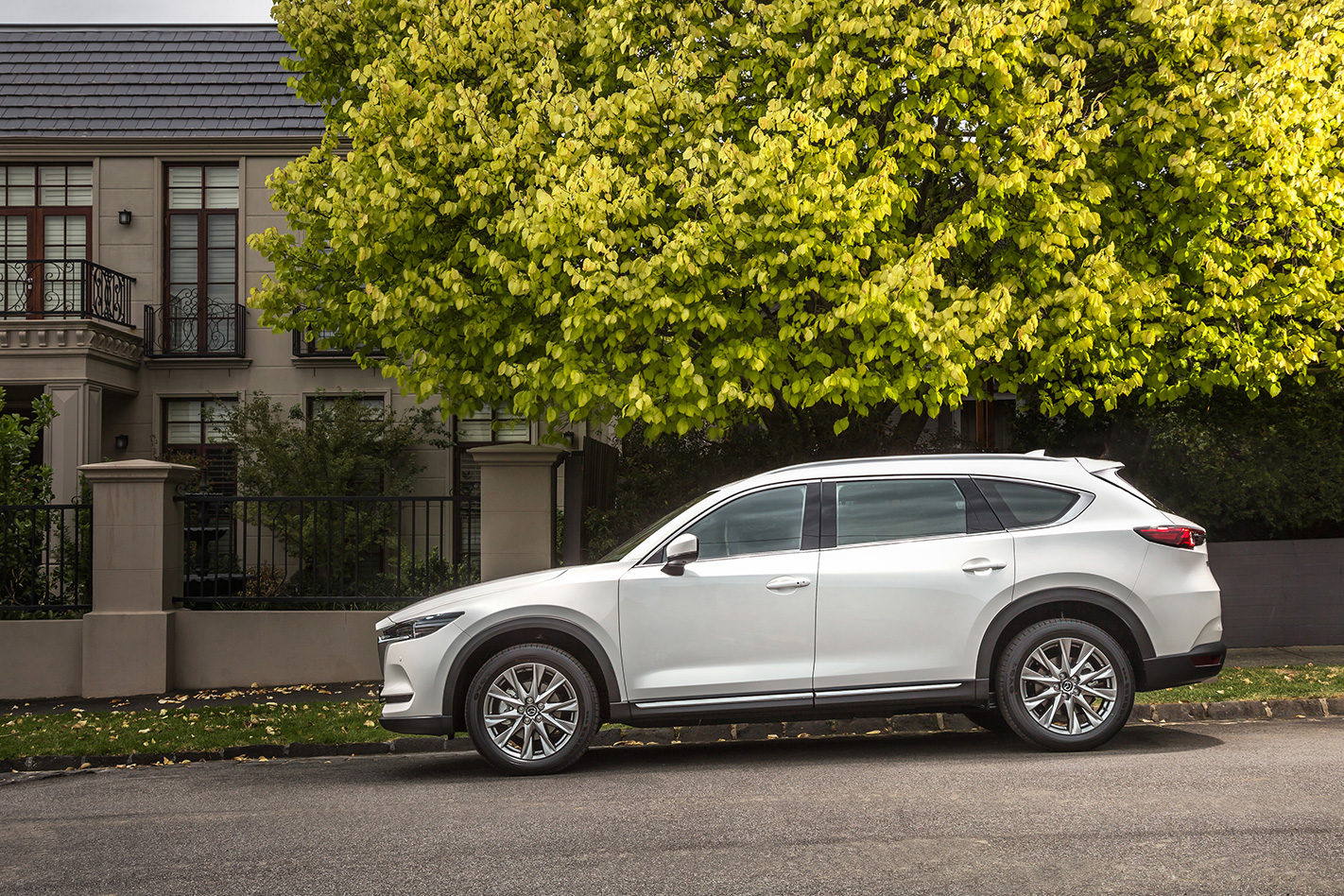
Mazda Australian claims its own customer research indicates potential buyers aren’t too fussed about which fuel type is being burnt; they’re more concerned with the actual consumption, so presumably the official numbers of 5.7L/100km for the front-driver and 6.0L/100km for the AWD models will be well received. They are, after all, well down on the mid- to high-8.0s delivered by the petrol CX-9 range on its official combined cycle.
But central to the CX-8’s reason for being is that third-row seating, so it’s a good thing the packaging hits the mark. Granted, I did struggle to stuff my 180cm frame into there with anything approaching grace and dignity, but once in, I reckoned I could cope with a 20-minute run across town. Kids, meanwhile, won’t have too much to gripe about in terms of leg and shoulder room, although visibility for shorter bodies is not brilliant, and there are no dedicated air vents back there. If there’s only a sixth passenger to be accommodated, the third row can be split to allow extra luggage space over the folded seventh seat.

The only slight demerit we could level at the third row is the narrow void it creates in the luggage compartment when the seats are folded to enable the 742 litres (floor to ceiling) of cargo space to be used. But it’s a small moan; mostly the CX-8 delivers exactly the seating flexibility and load-carrying versatility owners will want from it.
First impressions, then are mostly very positive, but seven-seater rivals from VW, Peugeot, and Skoda are far from push-overs in this segment. Exactly how effectively the CX-8 counters the latter pair will become apparent in August’s issue of Wheels.

SPECS
Model: Mazda CX-8 Sport AWD Engine: 2191cc 4cyl, dohc, 16v, TTD Max power: 140kW @ 4500rpm Max torque: 450Nm @ 2200rpm Transmission: 6-speed automatic Weight: 1957kg 0-100km/h: 9.6sec (claimed) Fuel economy: 6.0L/100km Price: $46,490 On sale: Now


